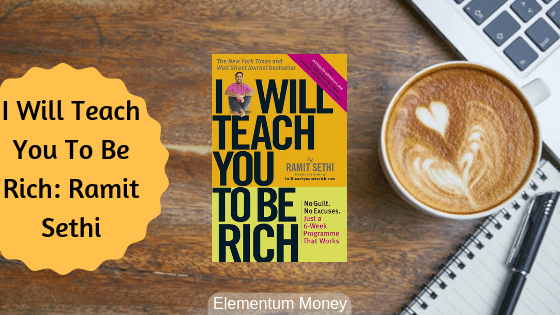I have yet again started inhaling books at an unhealthy rate. I read them while I commute, I read them on my iPad and I read them before bed. The problem is that reading it at different times and through different media often leads me to the road of multiple simultaneous books, making it difficult to keep track. As a result, only the books that really hook me get finished much quicker than the others I end up flirting with simultaneously. In this respect, the book Millionaire Fastlane really dragged a long time and took a lot for me to finish.
Millionaire Fastlane and MJ DeMarco
As per Amazon, MJ DeMarco is “a semi-retired entrepreneur, investor, advisor, and international best-selling author”. He talks in his book about how he had a eureka moment when he saw a Lamborghini and asked the owner of what he did to be able to buy one. The owner responded that he was “an inventor”. Since the time he had that conversation, DeMarco knew he needed to be an inventor to be able to get on to the Millionaire Fastlane. He then talks about his life and how he refused to be tied down to a job and kept trying to figure out how to solve a need, sell it off and earn millions. The book details the learnings from his experience doing that.
From the thought of the Millionaire Fastlane book emerged the idea of the Fastlane Forum which is quite an active interesting community of entrepreneurs. Be sure to check out the varied threads there.
Overall thoughts
I was fully on board when I read the Lamborghini story. The first time I saw a lime green Lamborghini Murcielago I was gaping open-mouthed too. However, the more I read the more I found myself frowning. The book is full of analogies and hyperbole and needs serious editing. Probably my biggest turnoff was when he talked about how “Get Rich Slow” is stupid and you need to get off that track.
I am all for being an entrepreneur and finding a scalable need. But, I don’t believe it is for everyone and neither do I believe the idea that getting rich takes time is to be scorned at. When Warren Buffet was asked by Jeff Bezos as to why so few people are successful using his simple investment philosophy, he also quipped that no one wants to get rich slowly.
DeMarco talks in a lot of analogies, most popular of which were Fastlane, Slowlane and Sidewalk. He also talks about mindsets, which to the jaded Personal Finance reader in me were all pretty much the same as mentioned by other popular books.
However, as a reader, I believe most books will end up teaching you something or the other and with this one also, there are two key takeaways that I believe are worth mentioning. Both these takeaways relate to entrepreneurship since the author makes no bones about the fact that a salaried job is synonymous with the Slow Lane.
Five Fast Lane Commandments
Five Fastlane Commandments or NECST Need-Entry-Control-Scale-Time is the five-point matrix that the author defines to decide what business should you enter on your way to the Millionaire Fastlane. It was one of the better parts of the book, though it reminded me of the famous Michael Porter’s Five Forces Analysis model but more so for entrepreneurship than established companies.
The NECST (pronounced as Next) set of commandments can be briefly summarized as:
Need
Get into a business where there is a gap in the market. Do not get into a business just because it is your passion, customer need be damned.
Entry
In this point, DeMarco gave the example of the umpteen Multi-Level-Marketing or MLM schemes that people often fall prey to. He makes the point that if the entry barrier to something is low, the number of people operating in that space is going to be far higher and resultantly margin much lower.
Control
This was another interesting point he made with the example of franchises. If you run a franchise, you are not the one who has complete control and whenever the parent company decides they could make or break your business. Similarly, any business based on Google ads or even Facebook visibility is then dependent on the algorithms that these two giants choose to deploy.
Scale
Before you start a business, understand what can be the maximum scale that you can grow to with that business. Can you impact only your pin code? Or can you end up having clients all over the world? After that, you may or may not reach it, but the potential of the scale is an important consideration.
Time
Check if the business you are considering can ever be operated without your presence and daily monitoring. This could mean processes and automation whereas it could also mean a high enough margin percentage to employ human resources to do so.
6-Pointed Crystal for Business
While DeMarco calls it the chess of business, since I don’t understand the game too well I decided to call it the 6-pointed crystal. In short, the author talks about these 6 aspects that should be focused on while starting a business.
1. Execution
Some time back I attended a workshop about testing your business idea. One thing which stuck with me is also what the author attests to. Fancy pitch decks or plans on paper are finally just that – paper. It is finally execution which is the key. Don’t put together a deck only dreaming of the series of venture capital funding that the plan could attract. Go out there, start something, get people who believe in your product or service or at least prototype. Execution is where the teething issues and the minor details come to light and get resolved.
2. Marketing
Having been a marketer for more than 8 years, I can vouch for the fact that it is of critical importance. However, while TV infomercial products are an exception, I don’t really agree with the author that marketing can save a bad product. In my mind, marketing starts before the product is born as product can also be a way of translating the vision of the brand or the company to the customers. Another important point that the author mentions is the price. There are two kinds of businesses – the first are where price is key and volumes are what will deliver the revenue. On the other hand, if you charge some premium, then you are communicating an enhance value in your product offering and expected to deliver something of higher value for the margin that you would ideally earn.
3. Customer Service
The author makes a very valid point here as to the importance of customer service in two aspects – one the way you deal with customers and can use it as delight as well as using it for highest quality customer insight. One of the things we all hate is having to deal with customer service. Any business which deals with it well has a higher probability of satisfying clients. On the other hand, once you are able to sift the wheat from the chaff, whining customers can often yield a gold mine of insight.
4. Product
As I mentioned in marketing, the product is the core. Unless it fulfills a need in the customers’ life and makes them want to repeat the purchase or experience, the business is going to find it very difficult to sustain. Go into a business where you know the product is a need for your target customer base rather than it is an easy business to get into or that it is your passion.
5. People
In this case, the author is talking about all possible human contact or interventions for the company, be it a partner, employees or investors. People can make or break your company. While I have mostly thought of it in terms of employees, as an entrepreneur, partners are probably even more important considering the engagement and commitment is far stronger in that case.
6. Ideas
Ideas are dime a dozen. However, you need to choose what you finally execute. The slip between idea and execution is where most people fail and slip from the Fastlane to the Slowlane. Isn’t that something you have seen all around? Working in a corporate job, I have heard enough and more colleagues about how it would be a much better idea to start a business. I often bite my tongue to resist asking what stops them. If you have an idea you are convinced of, know that it is just that till the time you show the gumption to execute it.
So, that’s the wisdom from the second half of the book which I thought was much more readable than the analogy filled mindset changing part in the first half.
Have you read the book? What did you make out of it? Let me know in the comments below.





Leave a Reply